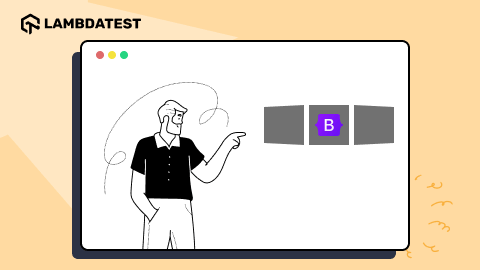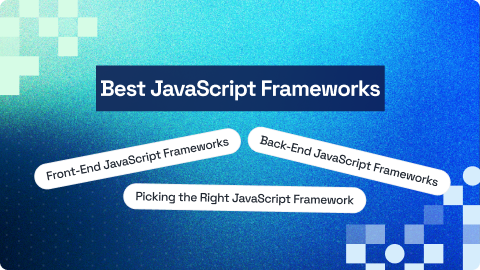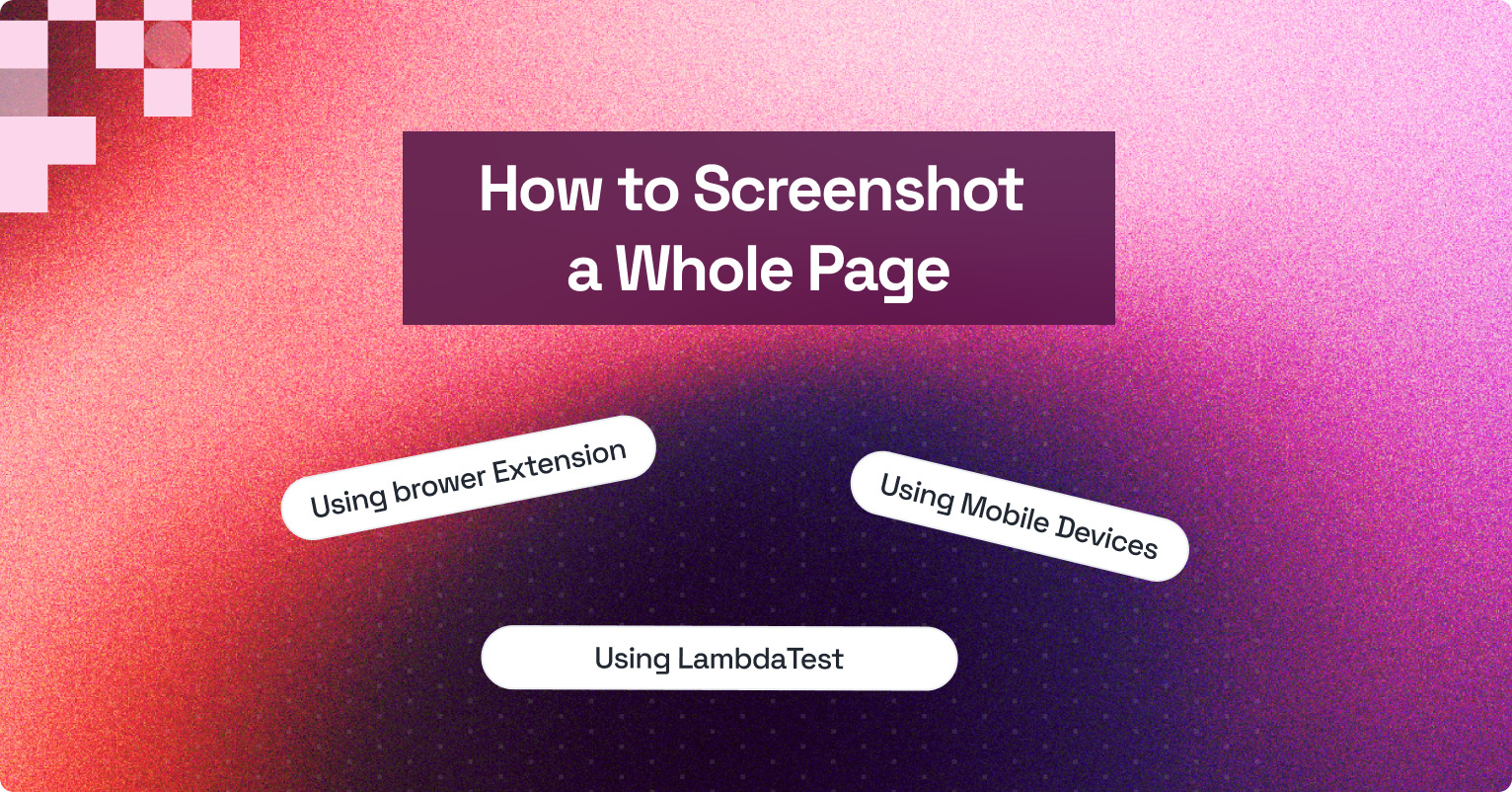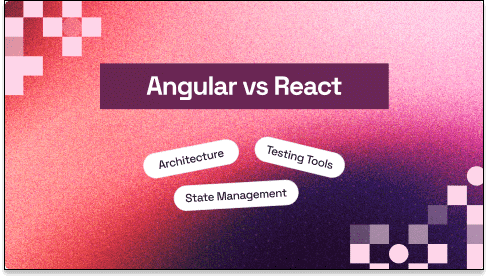47 Best Glowing Effects in CSS [2026]
Clinton Joy Fimie
Posted On: November 6, 2025
32 Min
Modern websites built using CSS often feature visually appealing components like buttons, navigation bars, headers, hero sections, product galleries, and testimonials to captivate users. These components are styled intentionally to enhance user engagement and improve the overall user experience. One popular way to achieve this is by using the glowing effect in CSS.
The glowing effect make elements stand out and create a striking visual appeal. By applying subtle or vibrant glows to text, buttons, or other elements, developers can draw attention to key areas of a webpage.
Overview
Glowing effects in CSS help enhance websites by adding visually striking highlights to text, buttons, boxes, and input fields, improving user interaction and giving a modern, captivating appeal.
What Are Some of the Best Glowing Effects in CSS?
CSS glowing effects make your website stand out, from neon text to glowing buttons. They draw attention to important elements, enhance user experience, and add dynamic visual appeal.
- Glowing Effect in CSS for Cards: Adds a subtle glow around cards or buttons that intensifies on hover, drawing attention to key features and calls-to-action.
- Glowing Effect in CSS for Neon Text: Creates brightly illuminated text resembling neon lights, customizable in color and shadow, ideal for headers, banners, and attention-grabbing text elements.
- Glowing Effect in CSS for Button: Surrounds buttons with a glowing effect to highlight crucial actions like “Submit” or “Buy Now,” adjustable from subtle to striking using box-shadow and animations.
- Glowing Effect in CSS for Input Field: Highlights input fields with a soft glow on focus or hover, improving user experience and making interactive elements more visually engaging.
- Glowing Effect in CSS for Box: Adds a luminous aura around boxes to emphasize sections, promotional content, or calls-to-action, created using box-shadow and smooth CSS transitions.
- Glowing Effect in CSS for Text Animation: Surrounds text with a pulsating glow that brightens and dims continuously, using text-shadow and keyframe animations to emphasize headlines or promotional content.
- Glowing Effect in CSS for Border: Illuminates element borders with a radiant glow, perfect for buttons, cards, or containers, using box-shadow and animations for hover or static emphasis.
- Glowing Effect in CSS for Box Shadow: Enhances elements with a glowing box shadow, often animated, to highlight content like buttons or featured sections using box-shadow and CSS animation.
- Glowing Effect in CSS for Text on Hover: Activates a radiant glow when hovering over text, emphasizing links or calls-to-action with smooth transitions using text-shadow for interactive effects.
- Glowing Effect in CSS for Outline: Highlights elements with a glowing outline on hover, ideal for buttons or images, combining the outline property, box-shadow, and transitions for a smooth animated effect.
- How to Create Glowing Effects in CSS?
- Best Glowing Effects in CSS
- Glowing Effect for Cards
- Glowing Effect for Neon Text
- Glowing Effect for Button
- Glowing Effect for Input Field
- Glowing Effect for Box
- Glowing Effect for Text Animation
- Glowing Effect for Border
- Glowing Effect for Box Shadow
- Glowing Effect for Text on Hover
- Glowing Effect for Outline
- Glowing Effect for Neon Button
- Glowing Effect for Neon Glow
- Glowing Effect for Neon Input Fields
- Glowing Effect for Ring
- Glowing Effect for Gradient
- Glowing Effect for Checkbox
- Glowing Effect for Radio Button
- Glowing Effect for Toggle Switch
- Glowing Effect for Menu Item
- Glowing Effect for Navigation Bar
- Glowing Effect for Loader
- Glowing Effect for Progress Bar
- Glowing Effect for Modal
- Glowing Effect for Tooltip
- Glowing Effect for Drop-down
- Glowing Effect for Table
- Glowing Effect for Banner
- Glowing Effect for Alert Box
- Glowing Effect for Avatar
- Glowing Effect for Calendar
- Glowing Effect for Slider
- Glowing Effect for Tab
- Glowing Effect for Accordion
- Glowing Effect for Pagination
- Glowing Effect for List
- Glowing Effect for Quote
- Glowing Effect for Code Block
- Glowing Effect for Badge
- Glowing Effect for Social Media Icon
- Glowing Effect for Share Button
- Glowing Effect for Comment Box
- Glowing Effect for Contact Form on Hover
- Glowing Effect for Search Bar
- Glowing Effect for Login Form
- Glowing Effect for Register Form
- Glowing Effect for Error Message
- Testing CSS Glowing Effects for Responsiveness
- Frequently Asked Questions (FAQs)
How to Create Glowing Effects in CSS?
You can make text or elements glow by adding properties like text-shadow or box-shadow with a bright color and blur. For extra effect, animate it with @keyframes so it pulses gently.
There are three main ways to create a glow effect in CSS:
- Text Glow: Use text-shadow to add glowing effects to text. Then, stack multiple shadows with different blurs and colors to make the glow appear stronger and softer.
- Element/Box Glow: Use box-shadow to make elements like buttons or divs glow. You can stack shadows and animate them to pulse or brighten when hovered.
- Animated Glow: Animate glowing effects using @keyframes by gradually changing text-shadow or box-shadow values over time, creating a pulsing, flickering, or breathing light effect on elements.
Example:
|
1 2 3 4 5 6 7 |
.glow-text { color: #0ff; text-shadow: 0 0 5px #0ff, 0 0 10px #0ff, 0 0 20px #0ff; } |
Example:
|
1 2 3 4 5 6 7 8 9 10 11 12 |
.glow-box { background-color: #111; color: #0ff; padding: 1rem 2rem; border-radius: 10px; box-shadow: 0 0 10px #0ff, 0 0 20px #0ff; transition: box-shadow 0.3s ease; } .glow-box:hover { box-shadow: 0 0 20px #0ff, 0 0 40px #0ff; } |
Example:
|
1 2 3 4 5 6 7 8 |
@keyframes pulse { 0%, 100% { box-shadow: 0 0 10px #0ff, 0 0 20px #0ff; } 50% { box-shadow: 0 0 20px #0ff, 0 0 40px #0ff; } } .glow-animated { animation: pulse 2s infinite; } |
What Are the Best Glowing Effects in CSS?
Best glowing effects in CSS include glowing cards that intensify on hover, neon text for headers, buttons with luminous glows, and input fields that glow on focus. Also, other effects include boxes with radiant auras, pulsating text animations, glowing borders, animated box shadows and more.
1. Glowing Effect in CSS for Cards
The glowing effect in CSS is a popular choice for designing websites, adding a touch of enchantment to elements like buttons. In its default state, it provides a subtle aura around the element.
The glowing effect on the card comes from the box-shadow property. It creates both inner and outer glows by using multiple shadow layers with different colors and offsets.
See the Pen
Glowing cards Effect by Clinton Joy (@Cejay101)
on CodePen.
2. Glowing Effect in CSS for Neon Text
A common effect that gives text a beautiful, bright look is neon glow text. The lettering appears illuminated from within, simulating the glowing effect of neon lights. This glowing effect in CSS is frequently applied to headers, banners, and other prominent text elements to draw attention.
The neon glow on the text is created by the text-shadow property. It stacks multiple shadows with increasing blur to give the bright, glowing effect.
See the Pen
Neon Glow Text by Clinton Joy (@Cejay101)
on CodePen.
 Note
NoteValidate if your website works and appears as expected across 3000+ browsers and OS combinations. Try LambdaTest Today!
3. Glowing Effect in CSS for Button
A glowing button is a visually appealing user interface element that surrounds its border or text with a glowing effect in CSS. It’s frequently used to draw attention to crucial website buttons like “Get Started Free,” “Submit,” “Buy Now,” and “Learn More.”
The glowing effect on the button is created by the box-shadow property. The transition property enhances it by smoothly intensifying the glow on hover.
See the Pen
Glowing Button by Clinton Joy (@Cejay101)
on CodePen.
4. Glowing Effect in CSS for Input Field
A glowing input field is a visually appealing way to highlight input elements on your webpage. By adding a subtle glow effect, you can draw attention to the input field when it’s focused or hovered over, enhancing the user experience.
This effect on the input field is created by the box-shadow property. The :focus selector changes the shadow color and intensity when the field is active, giving the glow.
See the Pen
Glowing Input Field by Clinton Joy (@Cejay101)
on CodePen.
5. Glowing Effect in CSS for Box
A glowing box is a visually captivating element that highlights important sections or features on a webpage. This effect creates a soft, glowing aura around a box, making it stand out against the background.
It’s particularly useful for drawing attention to call-to-action areas, promotional content, or any section that needs emphasis. The glowing box effect can be achieved using CSS properties such as box-shadow and transition.
See the Pen
Glowing Box by Clinton Joy (@Cejay101)
on CodePen.
6. Glowing Effect in CSS for Text Animation
This eye-catching technique surrounds text elements with a pulsating glow, giving the impression that they light up and dim regularly. This effect is ideal for emphasizing promotional material, headlines, or any crucial information on a webpage. The text-shadow and motion are two CSS properties used to create this luminous text animation.
The text-shadow property initially applies a multi-layered glow in various colors, while the CSS keyframes animation gradually changes the glow effect between two states, creating a pulsating glowing effect in CSS.
See the Pen
Glowing Text Animation by Clinton Joy (@Cejay101)
on CodePen.
7. Glowing Effect in CSS for Border
A glowing border is an attractive effect that highlights an element’s border with a radiant glow. This effect is ideal for emphasizing specific sections, such as buttons, cards, or containers, making them stand out on the page.
It is also perfect for use during hover to highlight elements like buttons, cards, or containers. The glowing border effect is created using CSS properties such as box-shadow and animation.
See the Pen
Glowing Border by Clinton Joy (@Cejay101)
on CodePen.
8. Glowing Effect in CSS for Box Shadow
Glowing box shadow is a visually appealing effect that makes an element’s boundary stand out with a soft glow. It is often used to draw attention to important sections and parts of a website, such as call-to-action buttons, sliders, or featured content. The box-shadow and animation are helpful CSS properties for creating either a pulsating or steady glow effect.
The code creates a glowing box shadow effect for a div element. Initially, the box shadow has a soft magenta glow, which transitions to a more intense blue glow in a continuous animation. The animation property ensures that the glow effect pulsates smoothly over a 1.5-second cycle.
See the Pen
Glowing Box Shadow by Clinton Joy (@Cejay101)
on CodePen.
9. Glowing Effect in CSS for Text on Hover
The glowing text on hover effect activates a shiny appearance when the mouse is over the text, making it look radiant. This effect emphasizes important text, such as website links or calls to action, by adding movement to static messages and increasing user interaction. It is achieved using CSS properties like text-shadow to ensure a smooth transition during the hover animation.
See the Pen
Glowing Text on Hover by Clinton Joy (@Cejay101)
on CodePen.
10. Glowing Effect in CSS for Outline
The glowing outline effect uses the outline property to create a glowing border around an element when a user hovers over it. This effect is ideal for highlighting buttons, images, or other interactive components on a webpage. The glow is achieved with the outline property combined with box-shadow and transition to create a smooth animation.
See the Pen
Glowing Outline by Clinton Joy (@Cejay101)
on CodePen.
11. Glowing Effect in CSS for Neon Button
The neon glow button effect creates a vibrant and luminous appearance that resembles neon lights when a user hovers over it. This visually striking effect draws attention to important actions or links on a webpage. It is achieved using CSS properties like box-shadow and transition to create a glowing effect.
See the Pen
Neon Glow Button by Clinton Joy (@Cejay101)
on CodePen.
12. Glowing Effect in CSS for Neon Glow
The neon glow effect gives text a bright, vivid appearance, mimicking the glow of neon lights. This eye-catching effect draws attention to headings, banners, or other significant text components on a webpage. The luminous animation is achieved using CSS text-shadow and animation attributes.
See the Pen
Neon Glow Effect by Clinton Joy (@Cejay101)
on CodePen.
13. Glowing Effect in CSS for Neon Input Fields
The neon text input effect enhances user perception of text fields by adding a bright, glowing neon effect when they are clicked or hovered over. This visually appealing detail not only improves visibility but also makes the input fields more intuitive and engaging, making form creation more effective.
The neon glow on the input field is created by the box-shadow property. The border-bottom-color change on :focus or :hover enhances the glowing effect.
See the Pen
Neon Text Input by Clinton Joy (@Cejay101)
on CodePen.
14. Glowing Effect in CSS for Ring
The glowing ring effect creates a circular element with a glowing outline that becomes more prominent on hover. This effect draws attention to key elements on the website, making them more noticeable and enhancing user interaction.
This effect on the ring is created by the box-shadow property. The @keyframes animation changes the border-color and shadow intensity on :hover to create a dynamic glow.
See the Pen
Glowing Ring by Clinton Joy (@Cejay101)
on CodePen.
15. Glowing Effect in CSS for Gradient
Creating a glowing gradient effect involves using CSS to apply a gradient background with a glowing animation. This effect is visually striking and is often used to highlight or draw attention to specific elements on a webpage.
The glowing effect on the gradient is created by the box-shadow property. The background with @keyframes animation shifts the gradient position, creating a dynamic glowing appearance.
You can also explore creating gradient shadows to elevate your web content and improve your UI’s visual appeal.
See the Pen
Glowing Gradient by Clinton Joy (@Cejay101)
on CodePen.
16. Glowing Effect in CSS for Checkbox
A glowing checkbox is an enhanced UI element that uses CSS to create a glowing effect around the checkbox when it is checked or hovered over. This glowing effect in CSS is visually appealing and makes checkboxes stand out, improving user experience by making them more noticeable and interactive.
The glowing effect is achieved through CSS transitions and box-shadow.
See the Pen
Glowing Checkbox by Clinton Joy (@Cejay101)
on CodePen.
17. Glowing Effect in CSS for Radio Button
A glowing radio button is an interactive UI element that uses CSS to create a glowing effect around the radio button when selected or hovered over. The effect enhances visual appeal and user experience by making the radio button more noticeable and engaging.
This effect on the radio button is created by the box-shadow property. The glow appears when the :checked state changes the background-color and shadow intensity.
See the Pen
Glowing Radio Button by Clinton Joy (@Cejay101)
on CodePen.
18. Glowing Effect in CSS for Toggle Switch
A glowing toggle switch is an interactive UI element that enhances user experience by visually indicating the switch’s state (on or off) with a glowing effect in CSS. This effect makes the toggle switch more engaging and noticeable, especially in dark-themed designs.
This effect on the toggle switch is created by the box-shadow property. The glow intensifies and changes color when the :checked state modifies both the background-color and shadow.
See the Pen
Glowing Toggle Switch by Clinton Joy (@Cejay101)
on CodePen.
19. Glowing Effect in CSS for Menu Item
The glowing menu item is an interactive navigation element that highlights menu items when they are focused on or hovered over. This glowing effect in CSS improves the user interface by making the navigation visually appealing and engaging. It provides instant visual feedback, helping users easily identify their location in the site hierarchy.
This effect on the menu item is created by the box-shadow property. The glow appears on :hover when the shadow and background-color change.
See the Pen
Glowing Menu Item by Clinton Joy (@Cejay101)
on CodePen.
20. Glowing Effect in CSS for Navigation Bar
A glowing navigation bar is an engaging UI element that highlights the entire navigation bar or its items with a glowing effect in CSS. This visual enhancement draws attention to the navigation area, making it more prominent and appealing.
The glowing effect on the navigation bar is created by the box-shadow property. The glow on links intensifies on :hover when both color and shadow change.
See the Pen
Glowing Navigation Bar by Clinton Joy (@Cejay101)
on CodePen.
21. Glowing Effect in CSS for Loader
A glowing loader is an animated element that indicates loading or processing on a webpage. It uses a glowing effect to create a visually appealing and engaging animation. This glowing effect helps keep users informed that a process is ongoing, enhancing the user experience during wait times.
This effect on the loader is created by the box-shadow property. The @keyframes glow animation changes the shadow intensity to create a pulsating glow.
See the Pen
Glowing Loader by Clinton Joy (@Cejay101)
on CodePen.
22. Glowing Effect in CSS for Progress Bar
A glowing progress bar is a dynamic and visually engaging UI feature that indicates the status of a job or process. Often used in web applications, it provides users with an aesthetically pleasing and clear way to view task completion.
The glowing effect in CSS enhances the progress bar’s visibility and appeal, using CSS animations and attributes like box-shadow, and can also involve JavaScript for dynamic updates.
See the Pen
Glowing Progress Bar by Clinton Joy (@Cejay101)
on CodePen.
23. Glowing Effect in CSS for Modal
A glowing modal is a pop-up dialog that appears on top of the main content of a webpage, often used to capture user attention for important information, alerts, or forms. The glowing effect enhances the modal’s visibility and makes it more eye-catching. This effect can be achieved using CSS properties such as box-shadow and keyframes for animations.
See the Pen
Glowing Modal by Clinton Joy (@Cejay101)
on CodePen.
24. Glowing Effect in CSS for Tooltip
A glowing tooltip is a small pop-up box that appears when you hover over an element, providing additional details or context. This feature helps give clarifications or extra information without cluttering the main content.
This effect on the tooltip is created by the box-shadow property. The glow appears on :hover when the tooltip becomes visible and its opacity changes.
See the Pen
Glowing Tooltip by Clinton Joy (@Cejay101)
on CodePen.
25. Glowing Effect in CSS for Drop-down
Creating a glowing drop-down menu involves adding a subtle glowing effect in CSS to enhance the visibility and attractiveness of the menu items when hovered over. This effect on the drop-down is created by the box-shadow property. The glow intensifies on :hover for both the button and links by changing the shadow color and spread.
See the Pen
Glowing Drop-down by Clinton Joy (@Cejay101)
on CodePen.
26. Glowing Effect in CSS for Table
A glowing table is an HTML table that features a glowing effect applied to its rows or cells, typically when a user hovers over them. This glowing effect in CSS enhances the table’s visual appeal and provides immediate visual feedback, making it easier to track which row or cell is being interacted with.
This effect on the table is created by the box-shadow property. The @keyframes glow animation changes the shadow intensity on tbody tr:hover to create a pulsating glow.
See the Pen
Glowing Table by Clinton Joy (@Cejay101)
on CodePen.
27. Glowing Effect in CSS for Card
A glowing card is a visual design element that uses a glowing effect around its edges or contents to make it stand out. This glowing effect in CSS is often used to highlight sections such as product cards, call-to-action areas, or important information blocks.
This effect on the card is created by the conic-gradient backgrounds combined with filter: blur. The @keyframes rotate animation spins these layers to create a dynamic, rotating glow.
See the Pen
Glowing Card by Clinton Joy (@Cejay101)
on CodePen.
28. Glowing Effect in CSS for Banner
A glowing banner can be created using HTML and CSS to build a container that resembles a banner with a glowing effect in CSS. This visually appealing feature makes the banner stand out and draws attention, often used to highlight important information, sales, or calls to action.
This effect on the banner is created by the box-shadow property. The glow becomes more pronounced on :hover by increasing the shadow size and opacity.
See the Pen
Glowing Banner by Clinton Joy (@Cejay101)
on CodePen.
29. Glowing Effect in CSS for Alert Box
You can make important messages stand out with a glowing alert box. This glowing effect in CSS draws attention to alerts, ensuring they don’t go unnoticed. This effect on the alert box is created by the box-shadow property. The glow appears on :hover when the shadow color and spread increase for both the button and dropdown links.
See the Pen
Glowing Alert Box by Clinton Joy (@Cejay101)
on CodePen.
30. Glowing Effect in CSS for Avatar
A glowing avatar is a visually appealing UI element used to represent users or profiles with an added glowing effect for emphasis or aesthetic enhancement. This effect on the alert box is created by the box-shadow property. The glow appears on :hover when the shadow color and spread increase for both the button and dropdown links.
See the Pen
Glowing Avatar by Clinton Joy (@Cejay101)
on CodePen.
31. Glowing Effect in CSS for Calendar
A glowing calendar is a visual element used to highlight events, schedules, or dates with a glowing effect for emphasis or aesthetic enhancement. This effect on the calendar would be created by the box-shadow property. The glow typically appears when interactive elements change state, such as :hover or :focus.
See the Pen
Glowing Calendar by Clinton Joy (@Cejay101)
on CodePen.
32. Glowing Effect in CSS for Slider
A glowing slider is an interactive UI element that allows users to select a value by dragging a thumb control along a track. Adding a glowing effect enhances the slider’s visibility and attractiveness, making it more engaging and easier to use.
The glowing effect on the slider would be created by the box-shadow property. The glow typically appears when interactive elements like the slider thumb or value display are hovered or focused.
See the Pen
Glowing Slider by Clinton Joy (@Cejay101)
on CodePen.
33. Glowing Effect in CSS for Tab
A glowing tab is a navigation element that allows users to switch between different sections of content on a webpage. The glowing effect in CSS highlights the active tab and provides visual feedback. This design enhances the tab’s visibility and indicates the currently active section or category.
The glowing effect for the tab is achieved using the box-shadow property, which creates a soft glow around the tab when it is hovered or activated. On hover, the tab will gain a subtle glow along with a border color change, creating a glowing effect.
When the tab is clicked or focused (:active), the glow intensifies for a more prominent visual effect. This effect is created by transitioning the box-shadow and border properties with a smooth animation.
See the Pen
Glowing Tab by Clinton Joy (@Cejay101)
on CodePen.
34. Glowing Effect in CSS for Accordion
A glowing accordion is a UI element with collapsible content sections. It allows users to expand or collapse sections to view or hide content. The glowing effect in CSS enhances visibility and provides visual feedback for active or hovered sections.
The glowing effect uses the box-shadow property on :hover and :active states for interactive glow.
See the Pen
Glowing Accordion by Clinton Joy (@Cejay101)
on CodePen.
35. Glowing Effect in CSS for Pagination
Glowing pagination is a UI component that provides navigation links for browsing through multiple pages of content. It improves user experience by visually indicating the current or hovered page with a glowing effect.
The glowing effect on the pagination is created by the box-shadow property. The glow appears on :hover or when the .glow class is applied.
See the Pen
Glowing Pagination by Clinton Joy (@Cejay101)
on CodePen.
36. Glowing Effect in CSS for List
A glowing list is a UI component that enhances visual feedback for interacting with list items, such as in navigation menus or item selections. It typically uses CSS transitions and pseudo-elements to create a glowing effect.
See the Pen
Glowing List by Clinton Joy (@Cejay101)
on CodePen.
37. Glowing Effect in CSS for Quote
A glowing quote is a design enhancement for blockquote elements, adding visual emphasis to the quoted text. It highlights the text when interacted with, making it stand out. This glowing effect in CSS is achieved by applying a glowing visual style to the blockquote element.
This effect on the quote would be created by the box-shadow property. The glow typically appears on :hover or :focus for emphasis.
See the Pen
Glowing Quote by Clinton Joy (@Cejay101)
on CodePen.
38. Glowing Effect in CSS for Code Block
A glowing code block is a visually enhanced display of code snippets used to highlight programming examples or specific syntax elements. It applies a CSS effect that adds a box shadow or border, which changes on hover to make the code block stand out.
This effect on the code block is created by the box-shadow property. The glow is enhanced by animated pseudo-elements moving over the block.
See the Pen
Glowing Code Block by Clinton Joy (@Cejay101)
on CodePen.
39. Glowing Effect in CSS for Badge
A glowing badge is a visually appealing UI element used to highlight or indicate status, achievements, or notifications. This eye-catching component effectively draws user attention, making it ideal for emphasizing important information or rewards within an application or website.
This effect on the badge is created by the box-shadow property. The glow intensifies on :hover for a more prominent effect.
See the Pen
Glowing Badge by Clinton Joy (@Cejay101)
on CodePen.
40. Glowing Effect in CSS for Social Media Icon
A glowing social media icon is a visually enhanced version of a social media platform’s logo, designed to attract attention and encourage interaction with social media links or buttons on a webpage. It uses CSS to create a glowing or pulsating effect, making the icon more engaging and noticeable when interacted with by the user.
This effect on the social media icons is created by the box-shadow property. The glow appears when the icons are hovered using :hover.
See the Pen
Glowing Social Media Icon by Clinton Joy (@Cejay101)
on CodePen.
41. Glowing Effect in CSS for Share Button
A glowing share button uses HTML and CSS to make the button more noticeable and inviting to click. This glowing effect in CSS is achieved by applying a pulsating visual enhancement to the button.
This effect on the share button is created by the box-shadow property. The glow intensifies on hover through the :hover state.
See the Pen
Glowing Share Button by Clinton Joy (@Cejay101)
on CodePen.
42. Glowing Effect in CSS for Comment Box
A glowing comment box is a UI element designed to catch the user’s attention and offer visual feedback, often triggered by hovering. The glow effect is created through CSS adjustments to the box-shadow, simulating a light glow around the box.
See the Pen
Glowing Comment Box by Clinton Joy (@Cejay101)
on CodePen.
43. Glowing Effect in CSS for Contact Form on Hover
A glowing contact form is a visually enhanced user interface element that provides feedback when hovered over. This glowing effect in CSS is used to modify properties like box-shadow and background-color, creating a glowing or highlighted appearance.
See the Pen
Glowing Contact Form on Hover by Clinton Joy (@Cejay101)
on CodePen.
44. Glowing Effect in CSS for Search Bar
A glowing search bar is a visually enhanced user interface element that provides feedback when hovered over. This effect is achieved using CSS to modify properties such as box-shadow and background-color, creating a glowing or highlighted appearance.
See the Pen
Glowing Search Bar by Clinton Joy (@Cejay101)
on CodePen.
45. Glowing Effect in CSS for Login Form
A glowing login form with animation uses CSS keyframes to create a continuous glowing effect around the form. This glowing effect in CSS provides visual interest and feedback to users, making the form more engaging without requiring interaction.
See the Pen
Glowing Login Form by Clinton Joy (@Cejay101)
on CodePen.
46. Glowing Effect in CSS for Register Form
A glowing register form with animation uses CSS keyframes to create a continuous glowing effect around the form. This effect enhances user interaction and provides visual feedback, making the form more engaging.
See the Pen
Glowing Register Form by Clinton Joy (@Cejay101)
on CodePen.
47. Glowing Effect in CSS for Error Message
To emphasize critical information such as form validation errors or alerts, use a glowing error message. This UI enhancement uses CSS animations to create a pulsating glow around the error message, making it more noticeable and urgent.
The glowing effect on the error message is created by the box-shadow property. The pulsing glow comes from the animated @keyframes applied to it.
See the Pen
Glowing Error Message by Clinton Joy (@Cejay101)
on CodePen.
Testing CSS Glowing Effects for Responsiveness
When implementing glowing effects in CSS across various UI elements, ensuring consistent performance and responsiveness across different browsers and devices is crucial.
Responsive testing tools like LT Browser allows you to validate responsiveness on a wide range of mobile devices, offering over 53 device viewports for side-by-side comparisons. It provides pre-installed viewports for mobiles, tablets, desktops, and laptops, enabling synchronized interactions like scrolling and clicking for thorough cross-browser and device testing.
To get started, head over to this LT Browser guide.
Conclusion
Exploring various glowing effects across UI elements reveals a versatile toolkit for enhancing user experience and visual appeal in web design. Each effect, from buttons to forms and icons, serves a unique purpose in guiding interaction and emphasizing key information.
Glowing effects primarily use CSS properties like box-shadow, border, and outline, along with animations defined through CSS keyframes. These techniques not only add aesthetic value but also improve usability by drawing attention and providing clear visual feedback.
Knowing when and how to apply glowing effects is crucial. They highlight interactive elements, improve form validation, and add depth to design elements. Customization options abound, allowing for tailored effects that match branding and UI requirements.
Frequently Asked Questions (FAQs)
How can I make text glow without using external libraries?
You can create glowing text purely with CSS by applying multiple text-shadow layers with different blur radii and colors. Adjust offsets and spread for intensity. Stacking shadows creates a soft neon effect, allowing glow customization without relying on any external frameworks or libraries.
Can I create multi-colored glowing text in CSS?
Yes, you can simulate multi-colored glowing text by stacking several text-shadow layers, each with a different color. Combine small offsets and varying blur radii for smooth transitions. This technique allows a rainbow or gradient-like glow effect while keeping performance high and code purely CSS-based.
How do I make a glowing button pulse continuously?
To make a button pulse, use @keyframes with box-shadow values. Animate the shadow’s blur and spread over time to simulate pulsing. Apply this animation to the button and loop infinitely. This gives the button a subtle breathing glow, enhancing interactivity without JavaScript.
Can glowing effects work on SVG elements with CSS?
Yes, SVG elements like text or shapes can glow using CSS filter or drop-shadow. Apply filter: drop-shadow(color x-offset y-offset blur) to simulate glow. This works for scalable vector graphics, maintaining sharp edges while creating a neon or halo effect around the element.
How can I optimize glowing effects for performance?
Avoid excessive shadow layers or large blur values, which can slow rendering. Limit the number of animated elements. Use will-change: box-shadow for smoother animations, and prefer hardware-accelerated properties. Proper optimization ensures glowing effects remain visually appealing without causing noticeable lag on modern browsers.
Is it possible to create glowing text that reacts to hover?
Yes, apply a transition to text-shadow on hover. Increase blur or shadow spread gradually to make the glow intensify when hovered. This creates a dynamic neon effect. Combining color changes and shadow layers enhances interactivity, producing visually appealing glowing text without extra scripts.
Can I combine multiple glows on a single element?
Yes, you can stack multiple text-shadow or box-shadow layers on a single element. Each layer can have different colors, blur, or offsets. Combining multiple glows adds depth and realism, allowing complex neon or sci-fi styles that appear three-dimensional without additional HTML or images.
How do I create a soft glow instead of a harsh one?
Use higher blur values with lower opacity colors in text-shadow or box-shadow. Avoid tight offsets, as they make the glow harsh. Layering semi-transparent shadows gradually builds a soft halo effect, producing a subtle, natural glow rather than an overpowering or unrealistic neon appearance.
Can I animate glowing effects with different speeds or easing?
Yes, use @keyframes with different durations and easing functions. For example, ease-in-out makes the glow fade in and out smoothly. You can animate multiple properties simultaneously, like color and shadow blur, producing dynamic, visually appealing effects that feel organic rather than mechanical.
Are glowing effects compatible across all modern browsers?
Most modern browsers support text-shadow, box-shadow, and filter: drop-shadow. Minor differences may exist in animation performance or blur rendering. Testing on Chrome, Firefox, Edge, and Safari ensures consistent appearance. Using standard CSS ensures broad compatibility without relying on experimental features.
Author
















